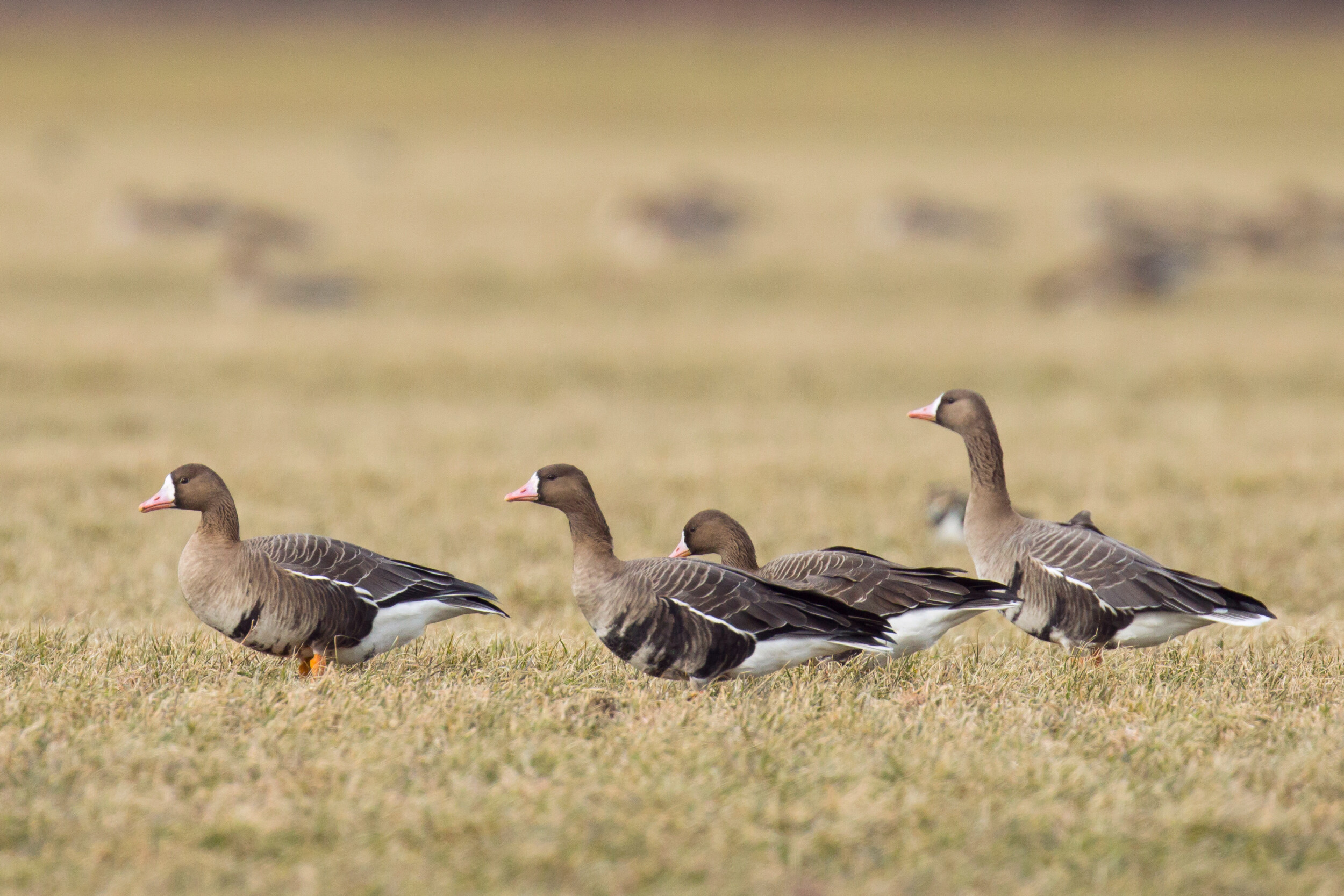Greater white-fronted goose
- Greater white-fronted goose
- https://linnuriik.ee/wp-content/uploads/2021/09/IMG_7038-1024x683.jpg
- Keemu linnud
- https://linnuriik.ee/wp-content/uploads/2021/09/04_Suur-laukhani_160501aa094746.mp3
Greater white-fronted goose. Photo: Roger Erikson
Introduction
Latin Anser albifrons
Estonian Suur-laukhani
Also known as: white-fronted goose, greater whitefront, specklebelly
Status in Estonia
Migratory bird.
Description
The greater white-fronted goose is a stout goose with a short neck and a stubby beak. Its legs are orange-red. The mature bird’s beak base is surrounded by a white forehead, black crosswise dots on the abdomen and no yellow eye ring; the white spot rarely reaches the crown. The juvenile has no white forehead or black belly marks, only a dark pink beak with a dark nail.
Size
Body length 64–78 cm, wingspan 130–160 cm, body mass 2–2.9 kg.
Similar species
Lesser white-fronted goose, greylag goose, bean goose.
Distribution
It breeds throughout Northern Eurasia and America as well as Greenland’s southwest coast. The European-Siberian subspecies is distributed throughout Russia, from the Kanin Peninsula to the Khatanga River on the Taymyr Peninsula. The European-Siberian subspecies winters in Western, Central and Southern Europe, but the Greenland subspecies winters in Ireland and Southwest Scotland. The greater white-fronted goose is a very common migratory bird in Estonia.
Population
It does not breed in Estonia but is a very common migratory bird.
Occurrence in Estonia
It can be seen during migration from March to May and September to October.
Diet
It eats soft (aquatic) plant parts, fresh grass, roots, rhizomes, berries, seeds. Molluscs, larvae and water insects are also sometimes consumed.
Habitat
It can be found in fields, shallow wetlands, lakes and sea bays during migration.
Nesting
It breeds in late May and early June. The nest is made on the ground in a hole surrounded by grass near a body of water. The female lays 4–7 eggs, which she incubates for 26–28 days. Within 24 hours, the chicks leave the nest for the nearest body of water, and they can fly at 45 days old.
Conservation status and protection
Not under protection.
Distribution and population in Lääne County
The greater white-fronted goose is a common migratory bird in Lääne County, both in spring and autumn. In the early mornings and evenings, the birds stop in the fields or feed in the beach meadows. Birds rest throughout the day and night, but only in bays and flooded-meadows.
In Matsalu National Park, the greatest number of greater white-fronted geese appears during April when flocks of thousands of birds can be seen. It’s good to observe them from the Haeska and Keemu observation towers or Rannajõe viewing platform. Thousands of greater white-fronted geese also stop at Saunja and Tahu bays in the Silma Nature Reserve.
